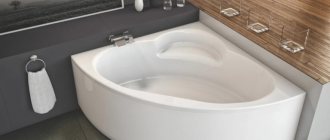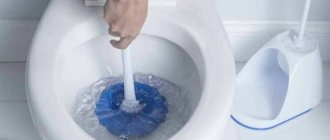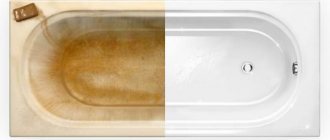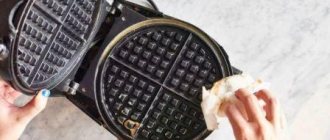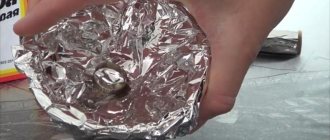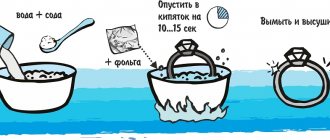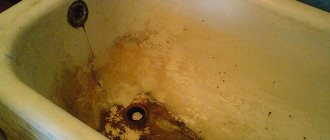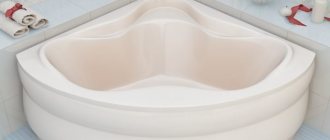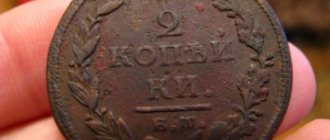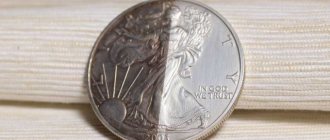To remove it and return the plumbing to its former cleanliness, use home remedies and household chemicals. The choice of cleaner, as well as the operating technology, depends on the material of the bowl.
We'll tell you in this article how to clean a cast-iron, enameled, acrylic bathtub from yellow deposits at home.
How to remove yellowness using improvised means?
Traditional methods help to cope with yellowness no worse than store-bought bleaches.
Recipes based on weak acids and alkalis are considered the most effective and accessible.
Soda and peroxide
Sodium bicarbonate has good cleaning properties. To speed up and enhance cleaning, it is recommended to use hydrogen peroxide together with soda.
The algorithm for using this tool is simple:
- Baking soda and peroxide are mixed in a 2:1 ratio.
- Apply the paste to the yellow spots.
- Leave the product on the walls for about an hour.
- Rub all problem areas with a sponge.
If the yellow coating is old and thick, then repeat the cleaning with soda and peroxide.
Lemon acid
The crystalline powder, used in cooking, is also known as an effective anti-rust agent. remove yellow and orange stains using this organic acid as follows:
- Dissolve 25 g of powder in a glass of water.
- Apply the solution with a sponge to the stains.
- Leave for half an hour.
- Repeat acid treatment 4 more times.
Soda and laundry soap
This recipe helps to cope with a small light yellow coating. The removal procedure includes several steps:
- grate the laundry soap and pour in a little water;
- add baking soda to the dissolved soap mass;
- Rub the problem areas with soap and soda slurry with a sponge;
- leave the product for a while;
- Rub the stain again with a sponge.
A paste of soap and soda can be prepared in larger quantities for future cleaning and stored in a closed jar.
Peroxide and ammonia
Both products are not in short supply and are easy to purchase at the pharmacy.
Discoloration of yellow spots is carried out in this order:
- hydrogen peroxide and ammonia are mixed in a ratio of 1:2;
- pour the prepared solution onto the yellow stains;
- wait about a quarter of an hour;
- wipe the bath with a sponge or cloth;
- If necessary, the treatment is repeated.
Acetic acid
To work, you need 9% table vinegar. If the contamination is weak, you can limit yourself to a weaker solution.
Cleaning is carried out as follows:
- Soak a cloth selected according to the size of the stain in vinegar.
- Apply a “compress” to the contaminated area.
- Wait 1-2 hours until the yellowness is completely discolored.
- To prevent the napkin from drying out, it is periodically moistened with vinegar.
If the entire bath is covered with yellowness, then warm water is poured into it, 1-2 liters of vinegar are added and left for 10-12 hours.
Lime deposits
Use soda and vinegar to remove limescale from the bathtub. Order:
- Mix baking soda and soda ash, take them in equal parts.
- When dry, sprinkle on plaque. Leave for 30 minutes.
- Rub lightly, a light abrasive will remove plaque. Then wash off.
Vinegar is used like this:
- Soak paper napkins in vinegar.
- Cover areas with deposits with napkins.
- Leave to act for 5 hours.
- After the allotted time, remove the napkins and rinse with plenty of hot water.
Lemon juice can remove yellowness from a bathtub. For one-time cleaning you will need 100 g. Dilute the juice with 2 tbsp. water, apply the solution to the dirt. Repeat the procedure for 2 hours at intervals of 15 minutes. Next, carefully rinse off any remaining residue with water. Cleaning should be done with rubber gloves, as lemon juice can damage the skin of your hands.
Stubborn old stains can be removed with ammonia and peroxide. It is necessary to mix 2 parts of ammonia and 1 part of peroxide. Apply the resulting liquid to the stain and leave for 15 minutes. Afterwards, rub the treated areas with a sponge and rinse off the surface. If the stains were not removed the first time, repeat the procedure.
Using household chemicals to remove yellow stains will be a quick solution to the problem, but you should carefully read the manufacturer’s recommendations and choose the product that suits the material of your bathroom. Bathroom tiles can also be cleaned of plaque using folk remedies.
How to remove stains with special compounds?
The assortment of hardware stores offers many special gels, liquids, powders against rust or limescale.
Cleaners differ:
- composition,
- instructions,
- volume,
- at a price.
Unicum
The sanitary ware is intended for cleaning the bathroom. The spray is suitable for:
- ceramics,
- enamel,
- porcelain,
- become,
- plastic.
The formula of the product includes a mixture of organic acids, nonionic surfactants and fragrance.
Use the liquid according to the instructions:
- Spray the spray onto the bath from a distance of 20-25 cm.
- Maintain a full reaction time of 15-20 seconds.
- Wipe the area with a soft brush or cloth.
- Persistent stains are re-treated with exposure for up to 1 minute.
A 500 ml spray bottle costs an average of 500 rubles.
Mr. Chister
Acrylic bathtub cleaner helps remove:
- yellowness,
- rust,
- limescale,
- fungus.
Gives the surface shine, suitable for frequent washing:
- enameled,
- ceramic,
- acrylic,
- steel surfaces.
Includes:
- NSAS,
- lemon acid,
- antibacterial component,
- fragrance,
- preservative
Cleaning of plumbing equipment is carried out according to the following scheme:
- The spray is sprayed onto the contaminated area.
- Allow the product to react for 2-3 minutes.
- With strong yellowness, the exposure time is increased.
- Wipe the treated area with a sponge or rag.
The average price for a standard 500 ml bottle is 160 rubles.
Bagi Acrilan
A universal remedy for rust, lime and fungus. Foam spray whitens and disinfects the surface of plumbing fixtures from:
- enamel,
- acrylic,
- ceramics,
- chromium.
The active ingredients are nonionic surfactants, citric acid and solvents.
Instructions for use require compliance with the following rules:
- Shake the bottle of foam well.
- Moisten the surface to be treated with water.
- Spray Acrylan evenly onto the stains.
- Leave the product for 1-2 minutes.
- Wipe with a damp cloth or rinse with water.
A bottle with a spray (400 ml) costs about 420 rubles in online and offline stores.
Mold
Black spots of fungus must be removed. Both traditional methods and household chemicals will help:
- Coal. Grind the tablets and mix with liquid bleach until a porridge-like consistency is obtained. Distribute the resulting product over the stain, leave for 1 hour and rinse.
- Soda and vinegar. To clean, sprinkle baking soda in a thick, even layer over areas with mold, then pour in vinegar and leave until the reaction is complete.
- Mold stains can be washed off with laundry soap, but this must be done regularly.
- Copper sulfate. It is dissolved in water and applied with a brush to areas with mold. This must be done with gloves.
- To clean the bathtub, household chemicals are used. A simple option is bleach or chlorine. Apply the product to the affected areas and leave for 15 minutes, then rinse with water.
Cleaning features depending on the type of coating
Modern bathtubs can be made of cast iron, steel, and acrylic. In most cases, metal bowls are coated with enamel, which requires careful handling during operation and cleaning.
Cast iron
It is advisable to wash bathtubs made of this alloy once a week. For normal hygiene procedures, use laundry soap or gel detergent . Cast iron bowls can be cleaned with weak acids (acetic, citric).
The porous alloy does not withstand the effects of gasoline, chlorine, and strong acids. You should also avoid using abrasive pastes and powders.
Acrylic
To maintain whiteness, it is recommended to clean plastic bathtubs with special products no more than once every 10-14 days. For such baths, it is advisable to purchase gels and foams designed specifically for acrylic products.
Do not rub the polymer plastic bowl . Preventive washing is carried out using washing gel or washing powder.
Steel
Bowls made of stainless steel, like cast iron, are covered with enamel. However, this layer is thinner and therefore more sensitive to the effects of cleaning agents.
For bleaching, it is recommended to use soft equipment (napkins, sponges, rags) and gentle products. It can be:
- weak acids;
- baking soda;
- ammonia;
- hydrogen peroxide.
Enameled
The glossy coating on the metal bowl requires regular washing, but special cleaning is carried out no more than once every 7 days. It is recommended to avoid strong acidic and chlorine-containing compounds, as their use can cause irreversible yellowing of the surface.
The enamel tolerates citric, oxalic, acetic acids and hydrogen peroxide well. It does not withstand harsh abrasives, but is lightened when using baking soda or soda ash.
Acrylic bathtub
You need to carefully wash the acrylic bathtub from plaque, since acrylic is a very fragile material. Basic care is regular rinsing with warm water, this should be done after each use. Use only soft sponges and special cleaning products. You can remove accumulated dirt with a weak solution of washing powder. To clean bathtubs with acrylic coating, it is prohibited to use:
- Alkaline and acidic compounds.
- Solutions containing alcohol.
- Abrasives: powders, hard scourers, etc.
- Bleach with chlorine.
Advice! For general cleaning, purchase a special cleaning agent for acrylic in the form of a gel, cream or foam.
What can't be used?
When cleaning the bathtub, you should remember that not all products and tools are universal. Some of them can cause damage to enamel, acrylic or metal surfaces.
To avoid damaging your plumbing when removing yellow stains, it is recommended to exclude:
- Steel wool and brushes. Hard products leave scratches, as a result of which the bathtub will require cosmetic repairs.
- Strong acids and alkalis. These reagents can ruin acrylic and enamel and thin the walls of a metal bath.
- Products intended for cleaning toilets. Such gels contain aggressive components that can damage the bathtub coating.
Bathroom care rules
To protect your bathtub from plaque, stains and scratches, follow these recommendations:
- Do not leave the position of the faucet the same so that the water flow is not directed to one point.
- Dripping faucets should be repaired promptly.
- Make sure that the bathtub is installed correctly; no water should remain in it after draining. If this happens, the bathtub needs to be leveled or moisture removed after each use.
- Ventilate the bathroom to get rid of excess moisture.
- Do not use too aggressive products; regular dish detergent or the above stain removal options are sufficient. Contaminants stick to chemically damaged surfaces much faster.
- Powders are used for bathtubs made of steel and cast iron, gels for acrylic ones.
- Regular care is the solution to many cleaning difficulties. It is recommended to wash the bathtub with laundry soap and a soft washcloth.
- The bathtub bowl should not undergo sudden temperature changes, as this may cause cracks to form.
- Buckets and basins that are placed in the bathroom must be plastic.
Useful tips
To remove yellowness and further maintain the cleanliness of the font, it is important to remember the following useful recommendations:
After each use, rinse the bathtub with warm water, then wipe dry with a soft cloth.- When using any plumbing product, it is advisable to wear gloves to protect your skin from irritation.
- Before removing yellow stains using household chemicals, you need to turn on the forced exhaust in the bathroom.
- The final stage of any cleansing with a special product is rinsing the bath with water and wiping dry with a napkin.
- You should not place metal cans and bottles on the sides of the bathtub, as they may leave rust marks.
- It is necessary to keep the faucet in good condition, since constantly dripping or flowing water leaves a persistent smudge.
All the most important and useful information about cleaning the bathroom is collected in this section of the site.
Main types of pollution
The bathtub has to be washed from various contaminants, and in order to choose the right product, you need to find out the reason. Standard bathroom stains:
- Soap scum. Shampoo, soap, shower gels, etc. are used every day. If you do not wash the bathtub thoroughly after each use, a barely noticeable film appears, which layers over and over again and turns into an unsightly coating. The film from household chemicals eats into the walls and cannot be removed without detergents.
- Lime deposits. It appears on plumbing fixtures upon contact with hard water.
- Rust. Red streaks on the bathtub will appear if there is a high concentration of iron in the water.
- Yellowness. It is caused by water flowing through old communications that can no longer be washed.
- Mold. Black spots of fungus are not only unpleasant in appearance, but also dangerous to health. They appear in the seams between the bathtub and the wall, on slopes and in other places with high humidity. It is imperative to get rid of mold, as its spores penetrate the human respiratory tract.
- Colored spots. The reason for this is careless handling of dyes: hair dye, brilliant green, potassium permanganate, etc.
- Traces of repairs. When carrying out cosmetic or major bathroom renovations, it is important to protect the plumbing. It is difficult to clean a bathtub from traces of repair.
If you want to clean your bathtub white, you should inspect it carefully. If there are cracks on the surface, then it will not be possible to completely remove the stains, and they will appear again. In cracks, contaminants accumulate and are retained. But it’s quite possible to remove yellowness and brighten the bathroom using folk methods.
When Cleaning Doesn't Help
If the tried cleaning products do not bring results, they resort to radical measures - replacing or restoring the bathtub. Dismantling cast iron products is very labor intensive. Therefore, in most cases, they try to restore the bathtub in one of three ways:
- Reapplying enamel. An inexpensive way to update your bathtub yourself. For household use, special formulations are produced that you can work with at home. Enamels for repeated application are toxic, and the service life of the coating is short - up to 5 years. Restored enamel is very sensitive to chemical and mechanical damage.
Restoration with enamel. - Restoration with liquid acrylic. Labor-intensive, expensive, but reliable and environmentally friendly method. It is advisable to entrust the work to professionals. Proper restoration with acrylic guarantees a 10-year service life of the coating, resistance to chemical damage and easy care of the product.
Restoration with poured acrylic. - Installation of acrylic liner. The fastest way to update your bath. The complexity of selecting and installing acrylic liners requires the participation of professionals. A correctly installed liner will hide all defects and will last more than 15 years. The design is easy to clean and is not prone to yellowing, but due to its small thickness it is not intended for heavy loads and can be damaged by impacts.
Installation of acrylic liner.
More details here: Methods for restoring cast iron bathtubs.
Baking soda
Soda was the main cleaning agent even before the advent of special abrasive powders. Its effect is achieved through mechanical action, but it cannot be used on all surfaces. An acrylic bathtub can be easily scratched and damaged, but a cast iron or metal bathtub can be cleaned in this way to remove yellowness.
All you need to do is put a little baking soda on a sponge and rub the problem area. There is no point in leaving soda on the surface, because it is only an abrasive that does not react with the surface. If baking soda doesn't work right away, it won't help in the future. Then it makes sense to combine it with something else, such as hydrogen peroxide.
Causes of yellow plaque
The main reason for yellowing of the bathtub is poor-quality tap water containing impurities of heavy metals, salts, and chlorine. The poor condition of metal sewer pipes increases the risk of contamination. Flowing through an old sewer, water washes away deposits of rust, iron and dirt. These contaminants end up on the plumbing fixtures, resulting in unsightly marks that spoil the surface.
The main reason for yellowing of enamel and acrylic is low-quality tap water containing rust particles, chlorine and heavy metals.
Other causes of yellow spots:
- improper surface care;
- use of unsuitable cleaning products;
- infrequent cleaning and tidying.
When starting to clean the bathtub, it is necessary to determine the cause and nature of the stains in order to effectively get rid of yellowing and take the necessary measures to prevent stains in the future.
